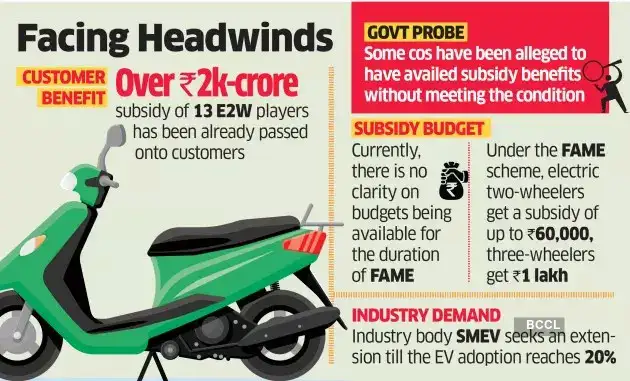At least six new CMVR certified electric two-wheeler models of makers such as Hero Electric, Bgauss and others are waiting for months to be enrolled on the NAB (national automotive board) portal to claim the FAME 2 subsidy. This, despite these models have complied to CMVR (Central Motor Vehicle Rules Notified by Government of India) and the recently-mandated AIS 156 Phase 2 stringent battery certification, said sources close to the development.
To add to this, some existing models of these players now have a limited window under FAME 2 and their certificates are not being renewed and could lapse soon.
Four companies have an additional issue of bypassing the ₹1.5 lakh eligibility criteria for availing subsidy by billing their chargers and the software separately.
“Though more than ₹2,000-crore subsidy of 13 E2W players which has been already passed on to the customers, is now said to be stuck with MHI. It seems to fairly simple that a practical view in the absence of supply chain and the delays due to Covid are factored in the solution,” says Sohinder Gill, DG, Society of Manufacturers of Electric Vehicles (SMEV).

The government is investigating allegations that some electric two-wheeler makers had availed of the subsidy benefit without meeting the condition on the use of local components as specified under Phase 2 of the Faster Adoption and Manufacturing of Electric Vehicles (FAME-II) programme. In their submissions to the government, the companies have denied any wrongdoing, ET reported last month.
Currently, there is no clarity on budgets being available for the duration of FAME 2 nor any indication of the next FAME from April 24, say experts.
“And the government has not given clarity yet of whether it plans to extend the subsidies further,” said Jay Kale, senior vice president and equity analyst, auto and auto ancillary, at Elara Capital. This will see further moderation in demand as prices will inch up substantially, said Kale.
Subsidies are meant to bring a price parity between vehicles that have electric motors and fossil fuel-run engines, thereby nudging buyers to go for the cleaner option. The incentive is tapered down as industry reaches a critical mass.
Under the FAME scheme launched in 2019, electric two-wheelers get a subsidy of up to ₹60,000, electric three-wheelers get a subsidy of ₹1,00,000.
Recently, a parliamentary committee recommended an extension of the FAME scheme to further enhance EV penetration in the country. Industry body, SMEV too has requested for an extension till the EV adoption reaches a level of 20%.
Another concern that most manufacturers have is that the subsidy may run dry before its deadline of March 2024. While sales may touch 1 million electric bikes by the end of the quarter ending September this year (second quarter of fiscal 2024), the battered manufacturers may not have enough steam to keep the growth momentum to reach the 2-million-plus target in FY24, said Gill.











